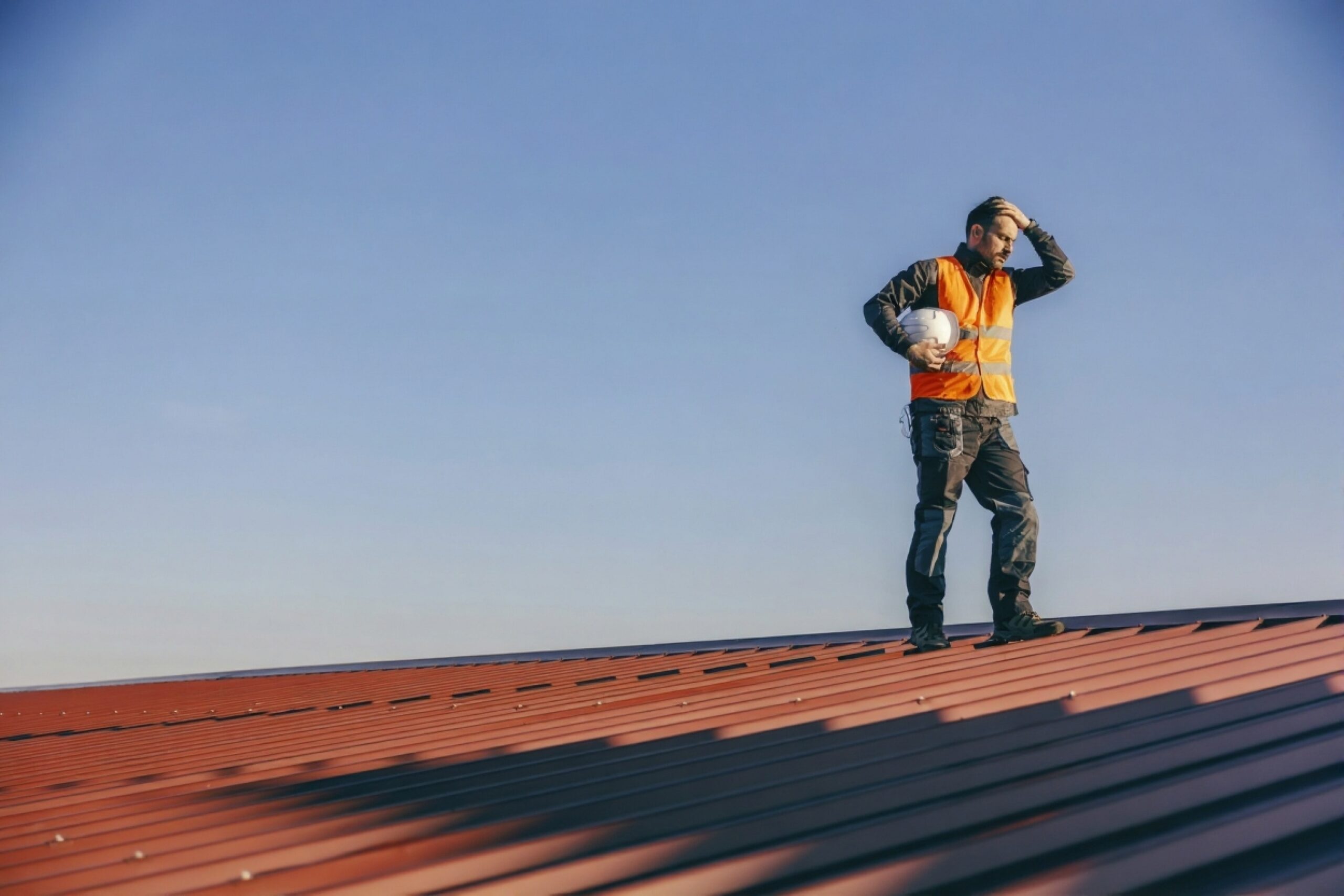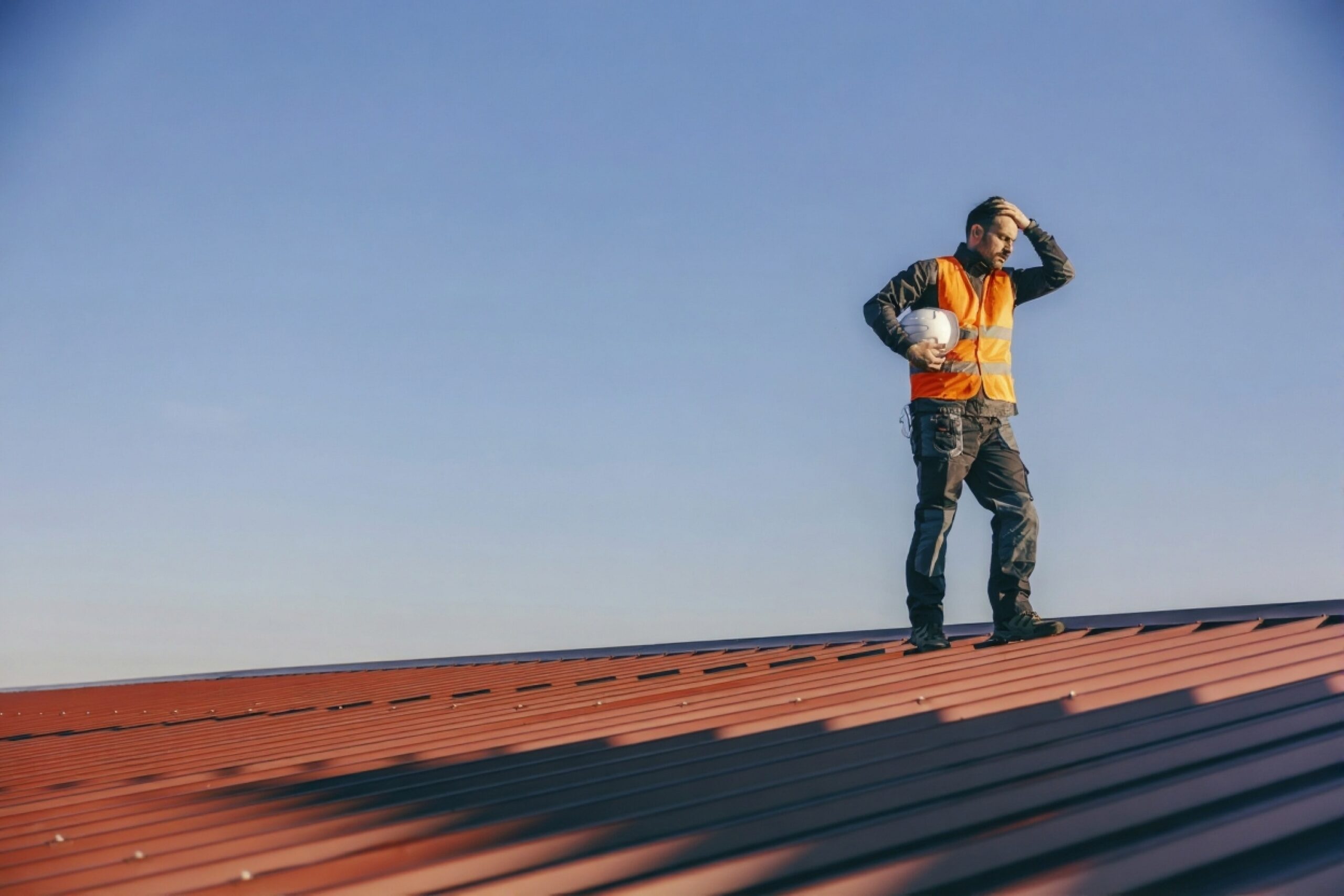
How to prepare your roof for Florida hurricane season in 2025
Florida-Specific Roofing & Climate Challenges
November 7,2025
How to prepare your roof for Florida hurricane season in 2025

Alt text: Homeowner and contractor performing pre-season roof inspection in Florida
Every year, Florida homeowners face the threat of hurricanes bringing devastating winds, heavy rain, and flying debris. Proper roof preparation protects your home, family, and investment when storms strike.
Florida experiences some of the most severe hurricane activity in the United States. Your roof serves as the first line of defense against wind speeds exceeding 150 mph and torrential rainfall. Without proper preparation, you risk catastrophic damage, costly repairs, and potential safety hazards.
This guide walks you through essential steps to hurricane-proof your roof, from selecting storm-resistant materials to implementing code-compliant reinforcements. You will learn practical maintenance strategies and discover how professional preparation saves money while providing peace of mind.
Understanding Florida’s unique roofing challenges
Florida’s building codes require stricter standards than most states due to frequent hurricane exposure. The Florida Building Code mandates specific reinforcement techniques, wind-resistant materials, and installation methods designed to withstand extreme weather conditions.
Your roof must resist three primary hurricane threats: uplift forces from high winds, water intrusion from driving rain, and impact damage from airborne debris. Florida’s rainy season compounds these challenges with prolonged moisture exposure that weakens structural components over time.
Strong sheathing forms the foundation of hurricane protection. Reinforced connections between trusses and walls prevent uplift, while properly installed drip edges channel water away from vulnerable areas. Wind uplift dangers increase dramatically with improper fastening or deteriorated materials.
Hurricane-rated fasteners and reinforced sheathing can reduce wind damage by up to 60% compared to standard installations.
Insurance companies recognize proper preparation through wind mitigation discounts. Documentation of code-compliant reinforcements, impact-resistant materials, and professional installation can lower your premiums significantly. Many insurers require regular inspections to maintain coverage in high-risk coastal areas.
Choosing storm-resistant roofing materials
Material selection directly impacts your roof’s ability to survive hurricane conditions. Each option offers distinct advantages for wind resistance, water protection, and longevity under Florida’s harsh climate.
Metal roofing provides exceptional wind resistance and durability. Standing seam systems with concealed fasteners perform best in hurricanes, withstanding winds up to 180 mph when properly installed. Metal reflects solar heat, reducing cooling costs during Florida’s intense summers. Top roofing materials for Florida homes include various metal options suitable for different architectural styles.
Concrete and clay tiles offer superior impact resistance and fire protection. Their weight provides natural wind resistance, though proper fastening remains critical. Tiles require reinforced structural support and cost more upfront, but their 50-plus year lifespan offsets initial investment. Best roofing material for Florida heat evaluates tile performance in extreme conditions.
Architectural shingles rated for high winds provide affordable hurricane protection. Look for products meeting Miami-Dade County’s stringent testing standards, which certify materials for winds up to 180 mph. Quality shingles with proper installation and maintenance last 20-30 years in Florida’s climate.
| Material | Wind Rating | Lifespan | Best For |
|---|---|---|---|
| Metal (standing seam) | Up to 180 mph | 40-70 years | Maximum wind resistance |
| Concrete tile | Up to 150 mph | 50+ years | Impact protection |
| Clay tile | Up to 150 mph | 50+ years | Traditional aesthetics |
| Architectural shingles | Up to 130 mph | 20-30 years | Budget-conscious homes |
Cool roof options for Florida homes combine storm resistance with energy efficiency. Reflective coatings and light-colored materials reduce heat absorption while maintaining structural integrity during hurricanes.
Essential reinforcement and maintenance steps
Proactive maintenance and strategic reinforcements prevent minor issues from becoming major failures during storms. Regular attention to critical components extends roof life while improving hurricane performance.

Alt text: Roofing professionals installing hurricane reinforcements on Florida home
Conduct seasonal inspections before hurricane season begins in June. Professional roofers identify weak spots, damaged flashing, loose fasteners, and deteriorated sealants that compromise protection. Regular roof inspections in Florida catch problems before they escalate into expensive repairs.
Reinforce vulnerable areas including roof edges, corners, and ridges where wind forces concentrate. Secondary water barriers beneath primary roofing materials provide backup protection against wind-driven rain. Proper ventilation prevents pressure buildup that contributes to uplift during storms.
Schedule your pre-season inspection by April to ensure adequate time for repairs before peak hurricane months.
Clear debris regularly from gutters, valleys, and roof surfaces. Accumulated leaves and branches create water dams and become projectiles in high winds. Trim overhanging tree limbs that could fall on your roof during storms. Catch storm damage early through monthly visual checks between professional inspections.
Address repairs immediately when you spot issues. Small leaks expand rapidly under hurricane conditions, causing interior water damage and structural deterioration. Signs of storm damage to roof include missing shingles, cracked tiles, and damaged flashing requiring prompt professional attention.
Document your preparations with photos and receipts for insurance purposes. Keep records of installations, reinforcements, and maintenance to support claims and demonstrate code compliance. Many insurance companies require documentation for wind mitigation credits.
Working with professional roofing contractors
Professional expertise ensures code compliance, proper material selection, and quality installation that DIY efforts cannot match. Licensed contractors understand Florida’s specific requirements and carry insurance protecting you from liability.
Experienced roofers assess your home’s unique vulnerabilities based on age, design, location, and existing condition. They recommend appropriate materials and reinforcements for your specific situation and budget. Preparation guide for hurricane season emphasizes professional evaluation as the foundation of effective protection.
Quality contractors provide detailed written estimates, timeline commitments, and warranty coverage for materials and workmanship. They pull necessary permits, schedule required inspections, and ensure all work meets current Florida Building Code standards. Verify licensing through the Florida Department of Business and Professional Regulation.
Roof wind damage key signs become apparent after storms pass. Professional post-storm inspections document damage for insurance claims while identifying immediate repairs preventing further deterioration. Quick response minimizes secondary damage from water intrusion.
Coastal homeowners face additional challenges from salt air corrosion and extreme wind exposure. Secure roof edges from coastal wind damage through specialized reinforcement techniques and corrosion-resistant materials designed for marine environments.
